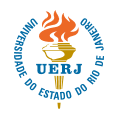Coordinator: Ricardo Carvalho de Barros
Description: Neutral particle transport has many applications in reactor physics and radiative transfer. Research groups in Brazil and in other countries have been working in the deterministic and stochastic computational modeling of the transport of neutrons and photons, both classical transport (systems with uncorrelated scattering centers) and non-classical (correlated scattering centers). The research group on Deterministic Neutronics Computating (NCD) has been offering contributions to classic transport simulations since 1997. This project will be an opportunity for the NCD to also contribute in the non-classical transport area with the graduation program proposed in the NUCLEAR ENGINEERING GRADUATE PROGRAM / THE OHIO STATE UNIVERSITY, with joint publications and PG student training. Since 1997, the NCD group has been working on computational simulations of classical transport of neutral particles applied to reactor physics and radiation shielding, highlighting significant contributions to the numerical solution of the Boltzmann transport linear equation and the diffusion equation in thick spatial grids; notably the spectronodal class of thick-mesh numerical methods. We are now interested in offering contributions to computational simulations of non-classical transport with wide applications in geophysics and in very high temperature reactors (generation IV). We propose in this project to initiate collaborations with more experienced researchers in the non-classical transport. In the classical linear theory of the transport of neutral particles, the probability of a particle at a given point in space and with known kinetic energy to experience an interaction is independent of the direction of motion and the length of the trajectory, which is the distance traveled by the particle from its previous interaction (birth or scattering). In this situation, the classical Boltzmann linear equation is used to model particle transport problems in which the locations of the scattering centers are not correlated. In this project, we propose to use the Boltzmann's generalized non-classical equation as a model for random systems statistically homogeneous in which the distribution function for the distances between the scattering centers is not exponential. This situation occurs in the description of the transport of photons in atmospheric clouds and transport of neutrons in ball-bed nuclear reactors.




